If you’re as coffee-obsessed as I am, this thought has probably crossed your mind once or twice. Where do coffee beans grow best? Also, “Can’t I just grow my OWN coffee beans?”
The idea of being able to grow coffee right in your own backyard sounds like a dream; there’s a reason it isn’t very common.
High-quality coffee beans can’t be grown just anywhere. While growing your own tomatoes or lettuce is simple to do, coffee requires particular conditions. The best-grown coffee beans are not easy to come by, and this quality depends heavily on the environment.
Coffee grows best in tropical and subtropical climates. This is why most coffee originates from very specific locations around the world. This area is known as the Coffee Belt. It spans across the globe as a whole, along the equator, just between the Tropics of Cancer and Capricorn.
We’ll go over everything in this article. Here we will walk through all the requirements and locations that harvest the most sought-after coffee.
Stick around to the end to learn how you can grow your beans at home, even if you don’t live on a volcano in Central America!
Why Don’t We See Coffee Plants Often?
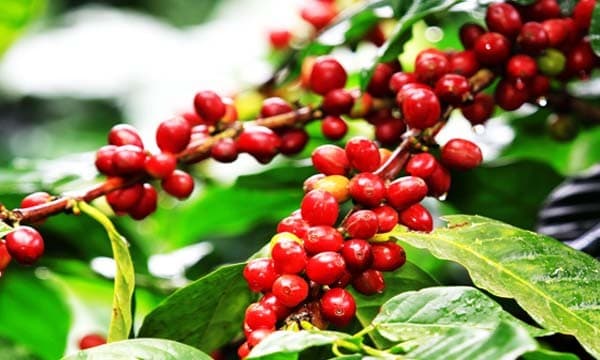
The reason many of us don’t know is because (through no fault of our own) we don’t live in locations where coffee can be easily grown.
If you live in North America or Europe, your coffee beans are probably imported from countries like Ethiopia, Costa Rica, South America, or Peru.
You may not even realize that coffee is grown from a coffee tree. The coffee tree is known for its dark, waxy leaves. It is green all year long. These trees even produce a white flower!
There are lots of coffee tree varieties with unique qualities. Arabica and Robusta are the most well-known. Arabica actually has about 100 different coffee varietals (theroasterie), while Robusta has only two.
Coffee trees can grow to be quite tall, (elevencoffees) but most coffee harvesters will keep trees relatively short to make it easier to collect the coffee cherries. Coffee trees can produce up to two pounds of roasted coffee per season.
Coffee Cherries have layers that need to be removed to unveil the green coffee seed within! This is the part that is then roasted.
Now that we have some background about where coffee comes from and how it grows, we can dig deeper into the ideal coffee growing conditions.
Where Do Coffee Beans Grow Best?
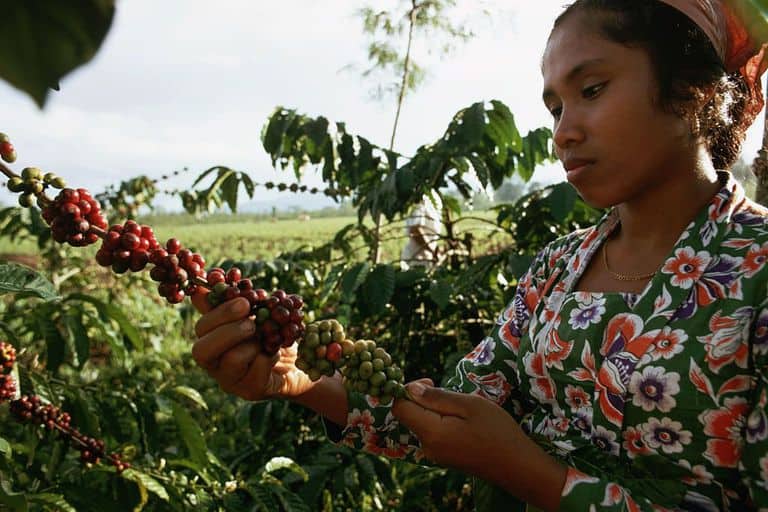
Subtropical & Tropical Climates
As I mentioned above, coffee grows best in tropical and subtropical climates.
The Coffee Belt is known for producing high-quality coffee beans. Coffee is grown in these locations because countries along the equator have tropical climates where coffee trees thrive.
They do well with lots of rain, moisture, and shaded sun instead of direct sunlight. Coffee trees can flourish in both cool and warm tropical climates depending on the variety.
Over 70 different countries produce coffee. While they may have similar climates, each country grows and harvests its coffee in unique ways. Factors like landscape (flat or mountainous) and the local culture have shaped the coffee harvesting process. These factors and methods influence the flavor profile of the coffee.
Pest-free
It may seem obvious that healthy plants need to be protected from pests and insects. However, coffee trees are targeted explicitly by pests. If coffee growers aren’t careful, pests can ruin their harvest quite easily.
You may be surprised to learn that climate change plays a significant role when it comes to harvesting pest-free, high-quality coffee.
Unfortunately, temperatures in most coffee-growing regions are increasing significantly. While the impacts of climate change are not immediate, it will change how and where coffee is grown over time. As temperatures warm, the likelihood of pests also rises. This can ruin coffee crops!
Specifically, an insect called Hypothenemus hampei (H. hampei) harms coffee trees. These insects are quite literally changing where coffee beans grow best.
H. hampei loves warmer temperatures. You might wonder, “what does this bug have to do with coffee?” You’d be surprised to learn that pests dramatically influence where coffee can be grown.
Typically this insect only targets low-altitude coffee trees because it is warm enough for these insects to survive. In the past, higher altitudes protected coffee trees from these pests. The temperatures at these heights were too cold for H. hampei to live.
But, if temperatures rise, we will likely see more and more coffee trees being harmed by pests such as H. hampei.
As a result, locations with cooler tropical climates and higher altitudes will better adapt to climate change consequences. Most coffee companies will focus their growing and harvesting efforts on these higher altitude locations.
Rich Soil
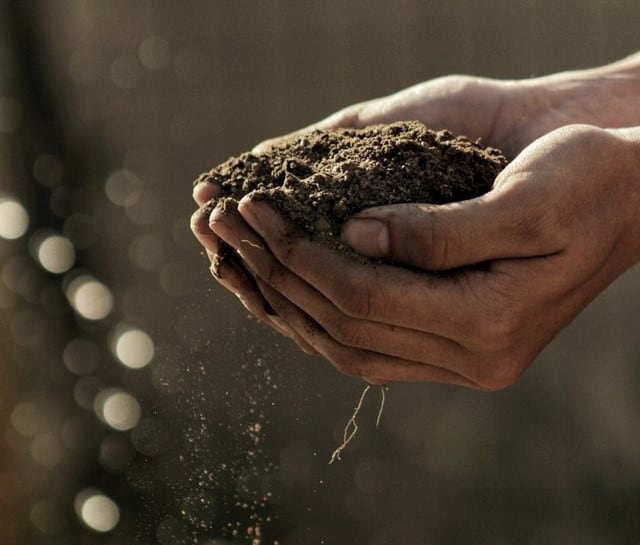
Coffee trees prefer an environment with nutrient-rich, acidic soil. Coffee can grow in different kinds of soil. However, it does best in locations with red volcanic earth or sandy loam.
Coffee needs soil that drains well, so clay or heavier soil is not ideal. Volcanic soil is what makes coffee beans from places like El Salvador so delicious. Did you know growers to plant and harvest coffee on the slopes of volcanoes? That’s pretty cool!
Best Places to Grow Coffee
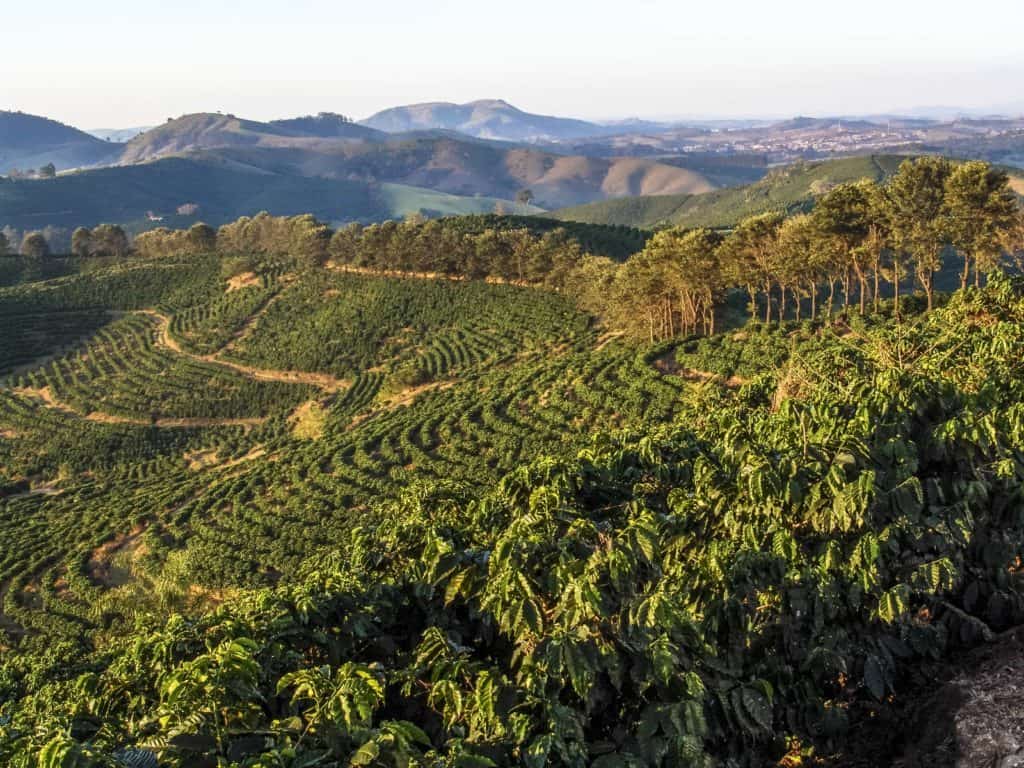
Locations with the perfect blend of temperature, climate, altitude, soil, and protection from pests will always produce optimal coffee beans.
Some of the most well-known places within the Coffee Belt include locations within the continents of South America, Africa, and Southeast Asia. Specifically, these countries are known for producing and distributing excellent coffee:
- Hawaii due to its abundance of volcanic soil and island climate.
- Central America is along the equator, so the climate is just right for harvesting coffee. Plus, there is a volcanic range and many mountains which offer the unique attributes of higher altitude.
- Ethiopia grows coffee in high mountain ranges. They also have really unique cloud forests. These are forests where clouds settle low, offering lots of consistent moisture that allows wild arabica coffee to grow.
- Colombia has produced coffee for a long time due to the mountain ranges called cordilleras.
- Indonesia also has rich, fertile, volcanic soil, making it an ideal place to grow coffee. They grow their coffee trees on the highland plateau of Kintamani between two volcanoes, Batukaru and Agung.
This list is not comprehensive as many countries produce incredible coffee as a result of ideal climates and unique growing methods.
If you are interested in growing coffee, it is clearly best to go to the source. However, this isn’t feasible for most people. Remember the promise we made earlier? Now’s the time to learn how to DIY coffee without the expensive plane ticket!
Luckily you CAN grow your coffee plant at home. It will just require some planning and creativity.
Can I Grow Coffee Beans at Home?

The short answer is, yes, you can!
As you now know, coffee beans do require some very unique climate requirements. But, there are ways that you can grow your coffee beans.
While they may not meet the quality of coffee beans directly harvested from Ethiopia or Costa Rica, you can still get close! The key is to mimic the conditions of the Coffee Belt as closely as possible.
Buy Seeds
No, you cannot grow coffee plants from planting the coffee beans you bought at the store. These beans have been roasted and treated and will not be able to sprout.
There are over a hundred different coffee varieties, so you will have many options to choose from.
There are lots of online companies that sell coffee seeds and full plants. Your local garden center may even be able to order these for you if they don’t have them in stock!
Grow Your Coffee Plant Indoors
Your coffee plant does not belong in the backyard garden.
Most people do not live in climates where coffee trees thrive. As a result, we definitely suggest you grow your coffee plant indoors. Unless you happen to live in a tropical environment on the coffee belt, the climate in your area likely isn’t ideal for growing coffee.
Looking to get the most out of your coffee? I made a detailed guide on the best ways of storing your coffee!
This is why growing indoors is a good solution. Inside you will have more control over things like temperature, humidity, and light. Plus, you won’t have to worry as much about pests or fungus, which can be detrimental to your harvest.
Pot The Plant
A coffee plant makes a great potted indoor plant. You will want to pot it in a container that drains. Choosing a pot with multiple drainage holes is ideal.
For best results, you can re-pot in the spring, moving up in size each year to accommodate the plant’s growth.
Prune Your Coffee Plant
It is wise to prune your coffee plant to keep it at a manageable size appropriate for your home and space. Even coffee growers will prune to reduce the tree’s height to make it easier to harvest the beans!
Creating an Ideal Environment for a Coffee Plant
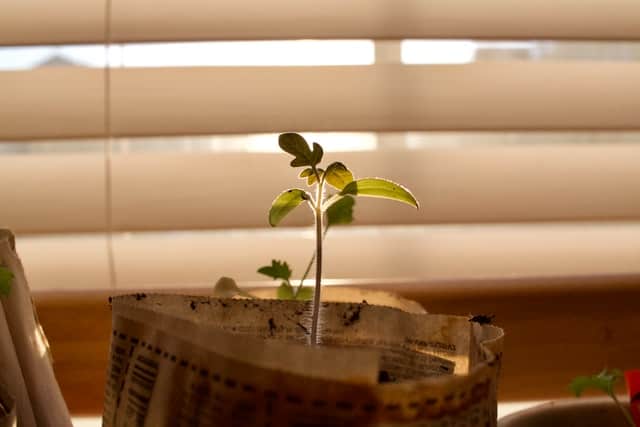
Since you have a lot of control inside, you will want to control these factors as you grow your coffee plant:
- Keep your potted coffee plant close to a window, but avoid direct sunlight. This will imitate the coverage that coffee trees get in nature. Typically taller trees, the “canopy” will buffer the direct sunlight. The coffee plant will receive dappled light throughout the day. Too much direct light will harm your plant.
- Adjust the temperature in your home. These plants will do well if the temperature is around room temperature or under 80 degrees Fahrenheit. If the climate is too warm, the plant will grow well, but you may not have many beans. Slow and steady is the key to developing a coffee plant if you intend to harvest beans from it.
- Water weekly. Coffee plants love moisture, and so you must keep the soil moist. It is a delicate balance. You will want to make sure the soil isn’t oversaturated, but you also want to be careful that the soil never dries out completely.
- When potting your plant, choose your soil wisely. You will want to choose acidic soil. The ideal soil pH range (perfectdailygrind) for coffee is around 6.5.
- Mist your plant every day. Coffee plants love humidity, so giving them a daily spritz will help them feel right at home as if they are in a tropical location. A helpful tip is to keep the plant in your bathroom, where humidity will typically be higher.
If you choose to grow a coffee plant, you will also need to be patient. It can take around 3-5 years for the plant to mature enough to flower and therefore create berries.
It is also unlikely that you will have enough coffee (gardeningknowhow) to brew an entire pot, how it can still be fun to experiment with growing your own plant. We feel this process helps us appreciate and feel more connected to our beloved coffee.
Wrapping Up
Coffee plants require very particular conditions and environments. So, the next time you are wondering, “why would I pay $15 for single-origin, ethically sourced beans when I can just pay $7 for a cheap bag of beans?”
I hope you will consider the journey your coffee took from the ideal climate of Costa Rica or Ethiopia all the way to your kitchen countertop. Good things are worth the wait and are a product of the proper climate and harvesting process.
We would love to hear from you! Which country in the Coffee Belt makes your favorite coffee? And, if you do try your hand at growing a coffee plant at home, be sure to share with us!
Make sure to check out our article, Easy Ways to Level Up Your Home Barista Game!
